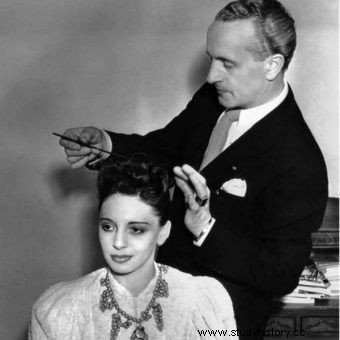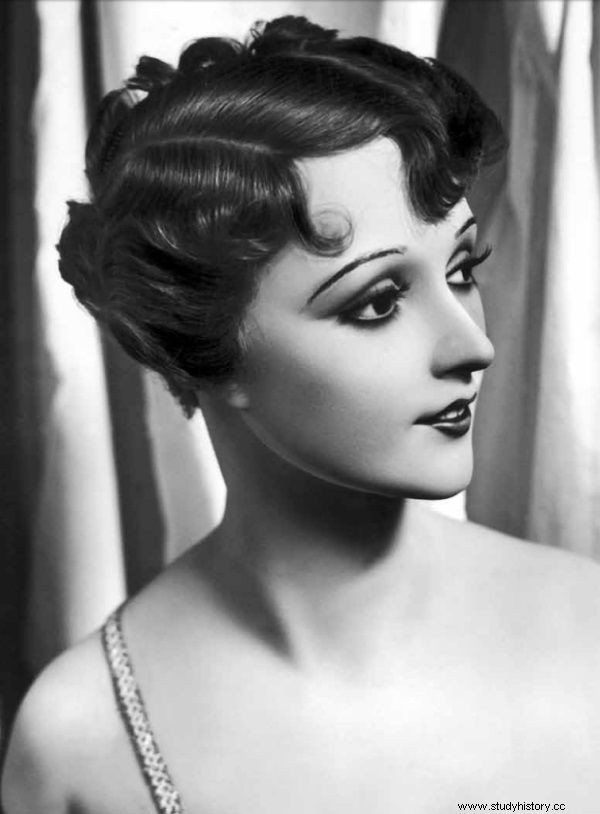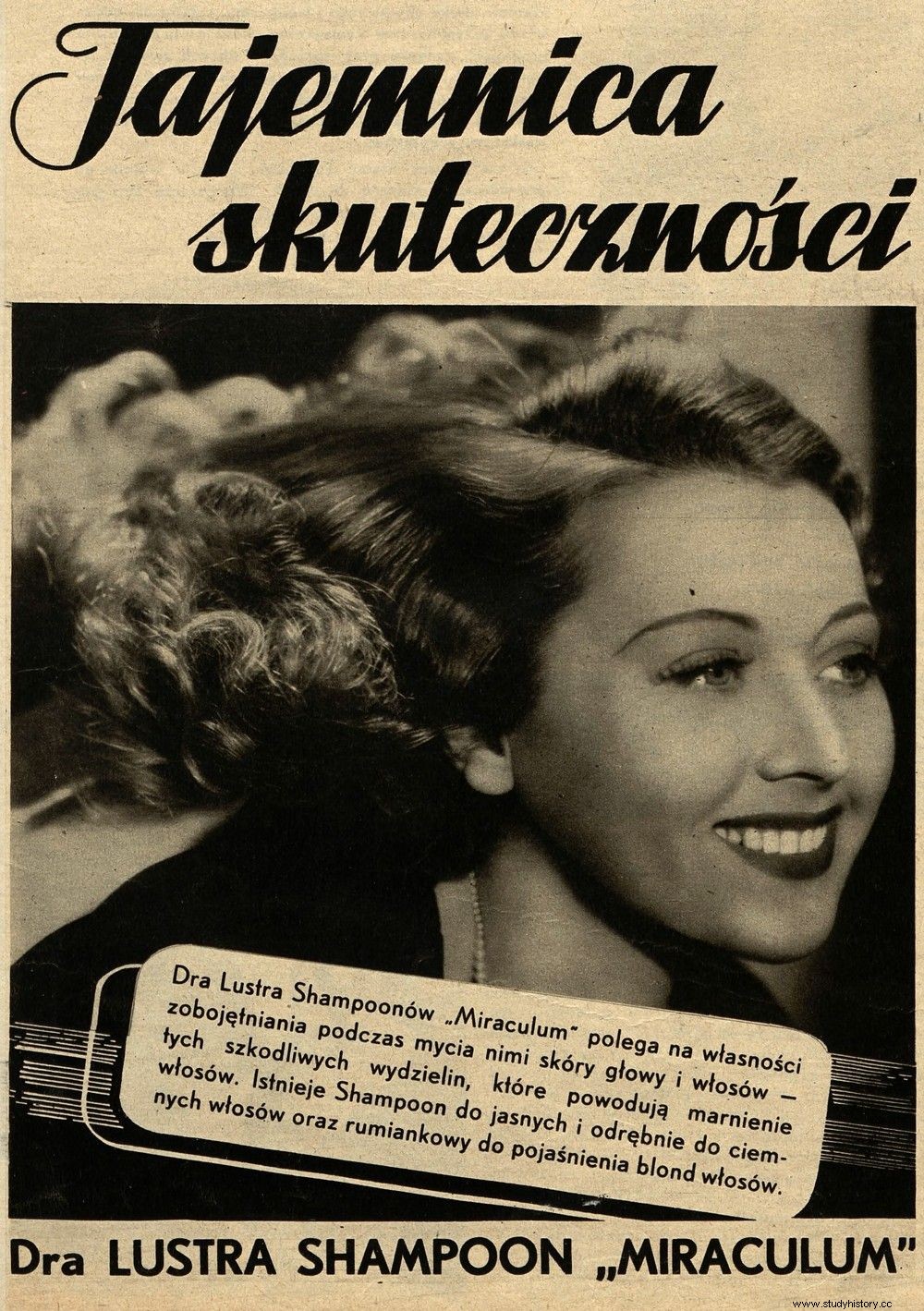Pre-war hair washing tips can seem eccentric and even repulsive. Wrong. There is a surprisingly lot of rightness in them. How often was your hair washed in the past? And why should you do the same?
No matter what length the ladies chose, the hair had to be properly cared for. The art of taking care of the hair was presented in detail by Dr. Władysław Hojnacki, author of the work "Women's hygiene and cosmetics". He wrote in 1928, but still has not been persuaded to follow the new trends characteristic of the interwar period:
Today's fashion of 'boyish', or at least short-cut hairstyles, wean us from seeing and admiring female beauty in her lush and long braids, and the woman herself simplifies the worries and trying to get them. However, it is not known how long this manifestation of imitating men will last and whether all women will be embraced by them.
So much for tastes. Fortunately, the doctor admitted that all women's heads require west. Meanwhile, the method of their care remained unchanged. Longer hair just required more free time from the owners. And much, much bigger…

Master of hairdressers Antoine Cierplikowski at work (photo:press materials of the Znak Horyzont publishing house)
Before the war, caring for your hair was based on three foundations - washing, brushing and massage. Today, many women cannot imagine that her hair would not taste shampoo, conditioner and other care products such as masks, silks or oils every day.

Hairstyle à la garçon. A hairstyle that has become a symbol of the era. Paris, 1934. (photo:press materials of the Znak Horyzont publishing house)
Meanwhile, our grandmothers and great-grandmothers would consider washing their heads so often a real extravagance. After all, it would require heating a large amount of water every day, and in homes without sewage systems, taking out a dirty tub every day. I do not even mention the risk of catching colds of undergoing this type of treatment regularly.
What may seem shocking today, as part of normal hygiene it was recommended to wash your hair ... once a month! Alternatively, if someone was struggling with the problem of oily skin, they could be washed off once a week in two different ways. For example, with mild soap and lukewarm water or egg yolk and lukewarm water.
Using cold for this was considered unhealthy. It was supposed to be extremely harmful to the hair and cause hair loss. Also, too frequent washing, according to Dr. Hojnacki, dried them out and made them brittle.

Leon Luster spared no money on advertising. Here is an advertisement for a shampoo placed in one of the issues of the well-known "Światowid" (source:public domain).
Julia Świtalska, in her book on hair care, published in 1929, also explicitly stated that compulsive washing is harmful. And her reflection seems even more important today than it was ninety years ago. Given the easy access to hot water, sanitation and a gigantic selection of shampoos, many women wash their hair virtually non-stop.
The scalp quickly gets used to such a procedure and produces more and more fat. As a result, twenty-four hours after washing, the hairstyle begins to look very unsightly. It needs to be washed again and here we are closing the vicious circle of hair damage…
***
Dozens of reliable recipes. Affordable recipes. And this:a fascinating story about how Polish women cared for themselves in pre-war Poland. Buy your own copy of Aleksandra Zaprutko-Janicka's book “Beauty without preservatives. Beauty secrets of our great-grandmothers. ”
Information sources:
- Barski Z., How to rationally nurture beauty, Kraków 1927.
- Barski Z., Outline of medical cosmetics, Krakow 1929.
- Hojnacki W., Higjena women i cosmetka, Lwów – Warsaw 1928.
- Świtalska J., How to care for your hair, Warsaw 1929.
